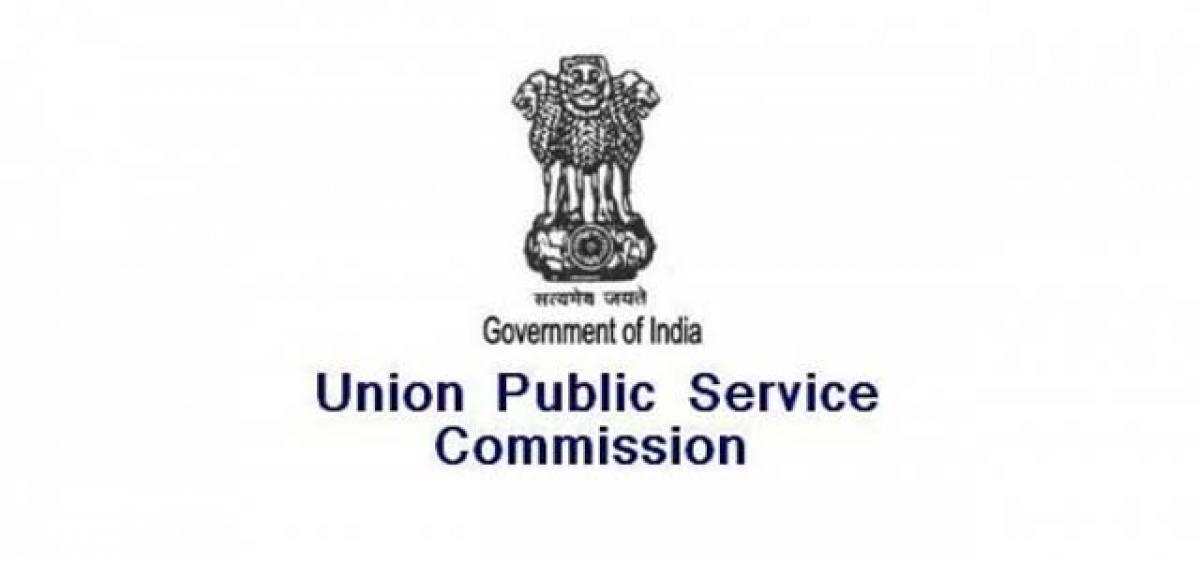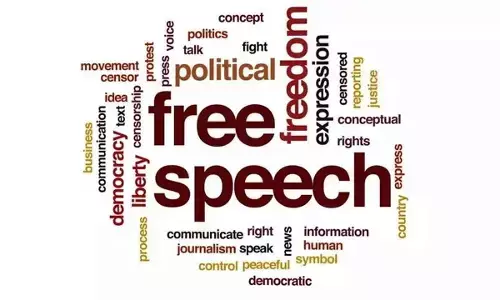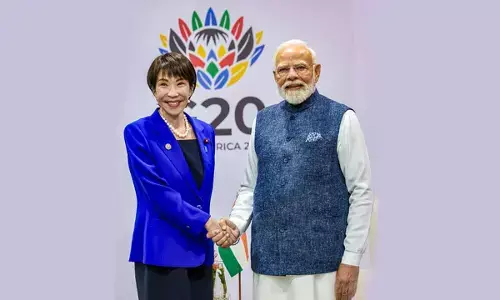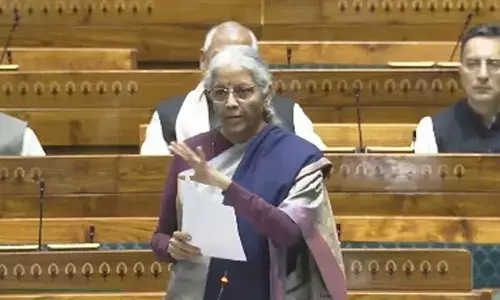Know about Civil Services in India

Civil Service is a heaven born service. The Civil Services of India runs the entire administration of the country. The elected ministers of India lay down the policies required to properly run the administrative machinery, which is then carried out by the civil servants in various central government agencies.
Civil Service is a heaven born service. The Civil Services of India runs the entire administration of the country. The elected ministers of India lay down the policies required to properly run the administrative machinery, which is then carried out by the civil servants in various central government agencies.
In the eyes of a common man District Collector is the government. Civil Services are as old as our civilization. Civilizations sustain due to the timely and effective provisions of civil services. Most probably, Civil Services as a career started with the monetization of the economic system or earlier when the barter system was in existence.
These civil servants are selected through the Civil Services Examination (CSE), the toughest nationwide competitive examination in India with a success rate of 0.1-0.3 percent-- the least in the entire world.
History
- The Civil Service concept in India dates back to ancient times.
- It had its presence in Aryan’s administrative system to the Kautilya's Arthashastra to Gupta age to Mughals and Britishers and still it is relevant for easy and smooth functioning of government.
- Mauryan Empire was founded by Chandragupta Maurya 326 B.C.E.
- The system was of centralized bureaucracy so that the operation of the state and a bureaucratic taxation system that financed public services can be moved without obstacles.
- The administrative network consisted of a higher bureaucracy recruited mainly from the upper castes category, and thus attracted high status and handsome salaries.
- The recruitment method was not well defined.
- The lower bureaucracy was recruited on local basis so that they can be more aware of the ground realities and can implement the programs and policies impressively.
- The upper bureaucracy had a largely managerial function.
- The administration mainly revolves around revenue administration.
- Land was used to act as an asset and land revenue acted as the prime source of treasure, which could have been used for social welfare.
- This bureaucratic system founded by Kautilyas, Chandragupta and Ashoka was adopted by the successive emperors of the Guptas.
- A very unique feature of the Gupta administration was that instead of salary in cash, it was paid in kind i.e. in the form of land.
- Only personnel of the military service were paid cash salaries.
- A new stage in the evolution of the administrative order came at the time of Delhi Sultanate.
- To consolidate authority and control over conquered area, a new class of civil servants had been set up.
- The Mughals tried to create a centralized bureaucracy as opposed to old feudal systems to administer the huge empire ranging from north to south.
- The Mughal government brought new methods of administration based on Persian administrative models and practices.
- Officials (Muslims) were organized in military ranks. They were ranked and paid according to the number of troops they commanded. Fewer officials now were given lands instead they were paid through nonheritable revenues thus making this new warrior elite dependent on the Great Mughal.
- This was known as the Mansabdari system. The British had set the civil services on the scientific terms to demarcate between civilian and military officers which were missing in Mughal era.
- The recruitment process was however on the patronage basis according to the will of the court of Directors who usually nominated their friends and relatives for the services.
- The novel idea of 'open competition' for recruitment was proposed by the Macaulay Committee which was listed as Charter Act of 1853.
- Finally, a merit based system based on open competitive examination set up along with the new system of cadre based Civil Services.
Evolution of Civil Services in India before Independence
- The term ‘Civil Servant’ came to be used in the company’s official records in 1765.
- Lord Cornwallis is known as the Father of Civil Services in India. He introduced Covenant Civil Services (Higher Civil Services) which were different from the Un-covenanted Civil Services (Lower Civil Services).
- The Former was created by the Law of the Company, while later was not created by the law of the company.
- “Lord Cornwallis is known as the Father of Civil Services in India. He introduced Covenant Civil Services (Higher Civil Services) which were different from the Uncovenanted Civil Services (Lower Civil Services).The Former was created by the Law of the Company, while later was not created by the law of the company”.
- After the revolt of 1857, there were many reforms in India which transferred all powers to crown.
- There were reforms in civil services appointments as well, which were done to increase support for British government in India among elites and educated population.
- Charter Act of 1853 abolished the patronage system and introduced the system of open Competition as the basis of selection of Civil Services.
- Indian Civil Services Act of 1861 provided the reservation of certain principal posts for the members of the covenanted services.
- According to the act, “any Indian or European may be appointed to any of the office, provided that he had resided in India for last 7 years”.
- Satyendranath Tagore was the first Indian ICS officer.
- Indian Civil Services Act of 1870 went for the Indianisation of the Civil Services. Later the Aitchison Commission recommended the Civil Services to be trifurcated into Imperial, Provincial and Subordinate Civil Services.
- To increase the representation of local people in the services, the Provincial Civil Service was constituted on the basis of the recommendation of Aitchison Commission in the last decade of 19th century.• The recruitment of Provincial Civil Service was made partly by promoting officers from the Subordinate Civil Service and partly by direct recruitment.
- Looking at the demand of people, Edwin Montague’s August declaration in 1917 recommended increasing the representation of the Indian population in civil services.
- By 1934, the administration was divided into seven All India Services.
- The Indian Civil Services was dominated by Indians from the third decade of 20th century till the independence.
- After independence, the services came to be known as Indian Civil Services.
Evolution of Civil Services in India after Independence
“Sardar Vallabhbhai Patel regarded as the Father of Indian Civil Service because he advocated the adoption of the All-India Services in independent India”
- After independence, India retained the civil services structure of pre-independent India.
- Article 312 of the Indian Constitution empowered the Parliament to create the All India Services, whenever required in the national interest.
- The objective was to preserve unity and integrity of the nation through unified structure and standards of administration.
- Number of reforms has been made in terms of recruitment, training and functions of civil services in India.
Report on Public Administration by A.D. Gorwala
- Advocated that all recruitments should be made in such a manner that there is no scope of patronage and biasness in the process of recruitment.
- He also gave recommendations for better training of new recruits. Some major reforms in the administration took place on the recommendations of First Administrative Reforms Commission (ARC) set up in 1966.
- It recommended selection process through written examination and interview.
Points to Remember
- First Administrative Reforms Commission (ARC) 1966.
- It recommended formulation of a national policy on Civil Services training and creation of Central Training Division in the Department of Personnel.
- To counter corruption and increase efficiency, it advocated establishment of institution of Lok Pal and Lok Ayukta.
It recommended formulation of a national policy on Civil Services training and creation of Central Training Division in the Department of Personnel.
To counter corruption and increase efficiency, it advocated establishment of institution of Lok Pal and Lok Ayukta.
It also gave recommendations on centre-state relations in terms of personnel and cadre management and functions of administration, so that economic and social goals of India could be achieved.
Kothari committee
- In 1976, recommended three stages of examination for civil services appointments.
- The three stage process comprised an objective type Preliminary examination comprising one Optional and General Studies, a Main examination which was to comprise 9 written papers and finally a Personality Test.
- In 1989, Satish Chandra Committee suggested some minor changes to Kothari model.
- The committee recommended inclusion of an ‘Essay' paper .The marks for the Interview were also increased from 250 to 300 marks.
- In the age of globalization and advanced technology, need was felt to tackle the emerging issues in a better manner.
- Hota Commission in 2004 recommended the use of Information and communication technology to spread awareness about government policies and programs.
- It advocated the use of eGovernance, code of ethics, public evaluation of services etc to increase the efficiency of administration.
- It recommended the introduction of aptitude test in the preliminary exam of civil services.
- It also suggested to set age group of candidates to be between 21- 24 years as an eligibility criterion to appear for the exam, but has not been accepted yet.
- The committee suggested a framework of investigation in irregularities by civil servants.
- It recommended to reward the efficient officers and to remove the personals that are unfit due to lack of competence or integrity.
- But, it has not been implemented by the government.
Second ARC was constituted in 2005
- To give suggestions for revamping the public administration system.
- The report of Second ARC recommended providing for “Right to Information” to the citizens, so that accountability and responsibility of administration could be increased.
- It emphasized on local governance, citizen centric administration, e-Governance, ethics in governance, strengthening of financial system etc.
- The committee recommended devolution of more powers to local government by enhancing capacity building, thus, strengthening the local voice.
- It recommended the appointment of national ombudsman for ethical governance.
- It recommended 33% reservation for women in Police department.
Points to Remember
Second ARC was constituted in 2005
- Second ARC recommended providing “Right to Information” to the citizens
- It emphasized on local governance, citizen centric administration, e-Governance, ethics in governance, strengthening of financial system etc
- It recommended 33% reservation for women in Police department.
Why Civil Services as a Career?
- Before starting preparation for Civil Services, there’s a need to make it clear in your mind why you want to join the service. T
- There might be several reasons why one would like to join the civil services.
- Civil Services are one of the most coveted career options in India.
- Civil Servants run most of the day to day services, projects and programs, help in policy formulation and carry out policy implementation in the country.
- It is a highly respectful and honoured profession.
- Civil Servants enjoy a high remuneration, great prestige and status in the country.
- Civil services enjoy a high position, power and authority as compared to most other services in the country.
- For a civil servant, the facilities and amenities provided are excellent.
- The service provides ample opportunities for on the job learning by confronting you with interesting and challenging tasks related to the development of areas.
- The job satisfaction is very high given the amount and magnitude of contribution that can be made to the development of the society and the nation.
- If you are working in a backward region, even a small contribution will make a great change in the lives of thousands of people.
- Civil servants are in direct interface with people, and hence delivery of results leads to direct rewards in terms of general public appreciation, leading to ultimate job satisfaction.
- Civil servants enjoy considerable level of job security as they cannot be fired easily.
- Civil servants perform variety of work like area development, disaster management, maintenance of law and order, representing the nation on international level, policy formulation and implementation, etc.
- It offers tremendous opportunities for leadership and to work at the grassroots level.
Categories of civil services: All India Civil Services:
The All India Civil Services comprises the following services:
- Indian Administrative Service (IAS)
- Indian Forest Service (IFS)
- Indian Police Service (IPS)
The officers in these offices are recruited by the Centre, but placed under various State cadres after being trained by the Centre. They have a liability to serve both the Centre and the State. Since 2012, the first tier of both the Civil Services Examination and the Indian Forest Service Examination are combined.
Central Civil Services (CCS): The Central Civil Services (CCS) is directly concerned with the administration and permanent bureaucracy of the Government of India. The specialised civil services fields in India mostly belong to the central services.
The CCS are classified into Group A gazette officers, who are appointed by the President of India himself, and Group B gazette officers, who are appointed by President-ordered authorities (except for officers for the Central Secretariat Service, who are selected by the President).
Recruitment process: The recruitment of the CCS is made through the Civil Services Examination, the Engineering Services Examination of UPSC and the Combined Graduate Level Examination of Staff Selection Commission (SSC).
State Civil Services: The State Civil Services, also called the Provincial Civil Services deal with state related issues, including education, land revenue, forests, agriculture etc.
Recruitment process: The State Public Service Commission’s conduct the recruitments for these offices.
Indian Administrative Service (IAS):
Cadre controlling authority: Ministry of Personnel, Public Grievances and Pensions
Recruitment through: UPSC Civil Services Examination
Responsibilities: IAS officers handle government affairs. They frame policies pertaining to a certain area like finance or commerce, modify the policies if needed and implement them through touring and thorough supervision of fund allocation etc. An IAS officer may have to represent the government in another country or in international forums, and if he/she is a Deputy Secretary, even sign agreements on behalf of the government.
Training: Two years of probationary period follows the appointment of an IAS officer, which is carried out in training schools, the Secretariat, offices on the field and in a District Magistrate's office.
He or she works as a Sub-Divisional Magistrate and proves his/her mettle by looking after the law and order, general administration and developmental work in the stipulated area. After two years in a junior scale, the officer shifts to a senior scale and starts climbing the ranks.
It is only after 24 years of service as an IAS officer, that a personal is promoted above super time scale and may be designated with positions such as Principal Secretaries and Financial Commissioners.
Ranks: An officer selected into the Indian Administrative Service gets exposure in very diverse roles like the collector, commissioner, head of public sector units, chief secretary, cabinet secretary etc.
The Cabinet Secretary is the top official who is involved in policy making, followed by Secretary/Additional Secretary, Joint Secretary, Director, Under Secretary and Junior Scale Officers in that order.
The top ranking civil servant in the State is the Chief Secretary, who may be assisted by Additional Chief Secretaries; at the district level, it is the Deputy Commissioner or District Magistrate, while the Divisional Commissioner is the top official in charge of his division at the divisional level.
IAS officers may get prestigious posts such as Finance Secretary, Development Commissioners and Home Secretary.
Indian Forest Service (IFS): Cadre controlling authority: Ministry of Environment, Forests and Climate Change
Recruitment through: UPSC Indian Forest Service Examination
Responsibilities: The IFS officers sustain the environment and the ecological balance through strict implementation of the National Forest Policy. They work to conserve, protect and develop forests and wildlife. Moreover, they also look towards developing the livelihood of forest-dependent communities in rural and tribal areas.
Where do they work?: IFS officers work in various forest and wildlife related national organisations such as the Wildlife Institute of India, Indira Gandhi National Forest Academy (IGNFA), Forest Survey of India, Indian Council of Forestry Research and Education (ICFRE), Wildlife Crime Control Bureau (WCCB) etc.
Ranks: IFS officers have the following ranks-- Assistant Conservator of Forests - Probationary Officer, Divisional Forest Officer (DFOs), Deputy Conservator of Forests, Conservator of Forests (CFs), Chief Conservator of Forests (CCFs), Additional Principal Chief Conservator of Forests (Addl. PCCFs), Principal Chief Conservator of Forests (PCCF) and Principal Chief Conservator of Forests (HoFF) (highest post in a State), Director General of Forests (India) (highest post at Centre).




















